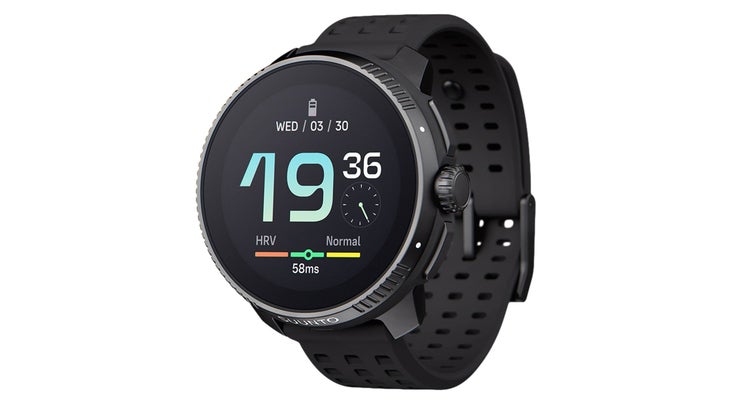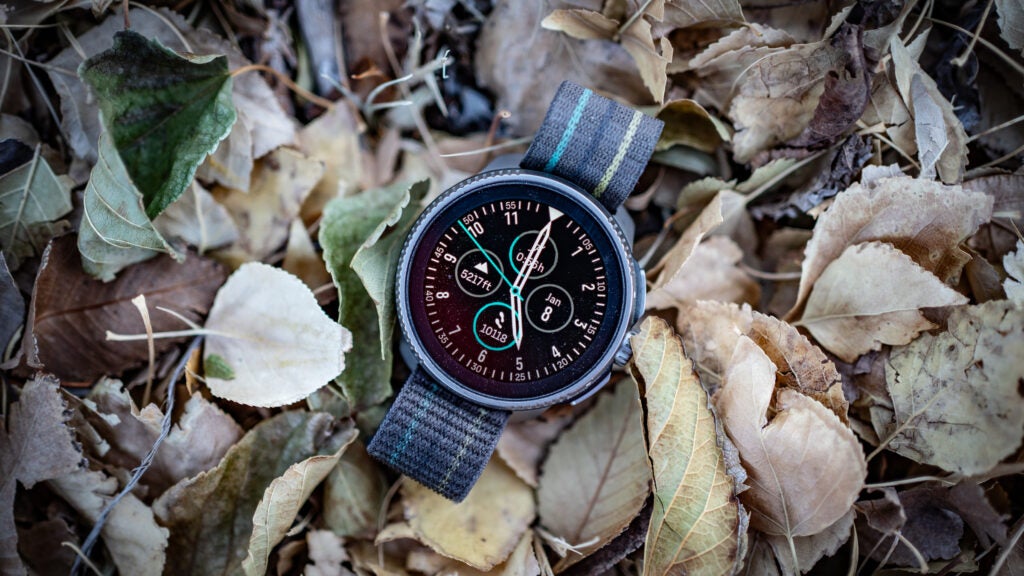No products in the cart.
Outdoor Adventure
Suunto Race Extended Wear-Test Review
When we put together a pool of reviewers, we want people who adventure big but also live normal lives—because that’s our true audience (very few readers are running 100-mile races or summiting Everest). Enter lead watch tester Meg Healy. There’s no one better suited to deliver real-world reviews of a watch that can track all of your workouts while integrating into your 9-5. As a runner, dancer, cyclist, and world traveler, she’s as active as you can get without being sponsored, but she also lives in the real world as a mom, PTA volunteer, and soccer coach.
Healy has tested a batch of watches for Outside over the past several years and says that the Suunto Race, at the moment, is her clear favorite. She’s now lived with it on her wrist nearly 24/7 for six months and found that, for her, the watch strikes the perfect balance of training coach and everyday companion.
If you buy through our links, we may earn an affiliate commission. This supports our mission to get more people active and outside. Learn more.

Suunto Race
Testing Stats
- Test Locations:
- Six months of continuous testing in a wide variety of activities:
- 450+ miles of running and hiking with more than 40,000 feet of elevation gain
- 100+ hours of yoga
- 60+ hours of martial arts training
- Hours of rollerblading, stand-up paddleboarding, kayaking, horseback riding, swimming, and more
Suunto Race Training Tracking Performance
Healy said the Race became her favorite workout companion for a number of reasons. First, the watch, which works with all the major satellite systems—GPS, GLONASS, GALILEO, QZSS, BEIDOU, and on both L1 and L5 GPS frequencies—grabs a GPS signal faster than any watch she’s tested. That was important for Healy who’s always busy and wants her workout to start as soon as possible.
“As you can imagine, people like me who like to run don’t like to wait,” she said. “It’s a pain to be waiting around on your doorstep, or at a trailhead in the wilderness of the Brazilian jungle before you can head out. But I never had that problem with the Race.”
She also loved the watch’s ability to track a wide range of activities. With other watches, Healy couldn’t always find the appropriate activity tracker for what she was doing, given her interests are as diverse as horseback riding, yoga, and martial arts. But the Race, which tracks nearly 100 activities, never left her hanging. Plus, on a day when she might do three or four different workouts, or a month where she does eight or 10 different activities, the watch kept up and, via the Suunto app, succinctly reported her overall fitness and provided useful feedback.
“I loved seeing that no matter what I was doing, there was clearly a time during my day when I felt best and had the best pace, no matter what,” she said.
Most of the time Healy knew where she was going on her runs, but she still appreciated the Race’s ability to download offline topo maps specific to where she was adventuring. Using the app, you can set a route that the watch will follow on screen and offer turn-by-turn instructions. If you get lost, the watch will point you back to wherever you started.
The battery on the Race is so good that Healy pretty much forgot about it. She estimates that she only charged it once every 10 days. According to official stats, Suunto says the watch will last up to 26 days if just used as a regular watch and give you up to 40 hours of continuous use with every tracking metric turned on. Or you can go for five days in “Tour” mode in which the GPS is tracking with lower accuracy.
Healy wore the watch at all times (except for the rare occasions when it was charging). She used the watch to track her sleep and said integrating that data into her overall fitness picture proved to be useful, helping her identify which days she was ready for a bigger and more taxing workout. (She did, however, say that the sleep tracking was not as accurate as some other watches she’s used, noting that the data occasionally said she was awake during times when she knew she was asleep.)
The only other problem Healy ran into with the watch was when she tried to track her blood oxygen. It’s not a metric she regularly monitors, but her dad had to check his for medical reasons so she decided to try the feature on the Race. Too often, however, an error code popped up saying it couldn’t provide any info.
Suunto Race Everyday Performance
Healy is 5 foot, 5 inches tall, and fit, so the 1.43-inch high-definition AMOLED screen sat a little big on her wrist (she might be more comfortable with the “S” version that has a smaller face). Nonetheless, she was glad to have all that real estate to display useful stats she’d check while working out. And over time she got used to the size and said it never got in the way when she was moving.
At night, Healy, who is light sensitive, liked that the watch could be set accordingly. When she raised her wrist to look at the screen, just a dim display of the time appeared rather than the full, bright screen. She also enjoyed using the watch as an alarm so that she didn’t have to sleep with her phone next to her bed, and found the flashlight feature helpful to navigate around the house in the dark.
Healy had nothing but praise for the watch’s durability. After months of using the watch hard without a care, she said it still looked almost new. “After looking this thing over I can’t see a single scratch on the face or a single mark on the body,” she said. One minor complaint: Healy prefers lighter colors, so she wished the titanium version she tested came in a white instead of just a metallic or purple colorway. Suunto does, however, offer a number of bright wristbands to liven things up.
Finally, she appreciated the Suunto Race’s price point. The titanium version Healy tested costs $549, significantly less than the $839 you’ll pay for the titanium and solar-charging top-of-the-line Suunto Vertical Titanium Solar or other comparable watches. For that extra money, the Vertical gets you a better battery life (up to 85 hours of continuous GPS use with solar recharging) and it’s made in Finland instead of China. Those differences are important, and will matter to some folks, but for many other everyday users, including Healy, they’re not worth the extra $300.
“The Race was everything I needed and it’s been an incredible training partner no matter where I’ve been,” Healy said.
Source link

